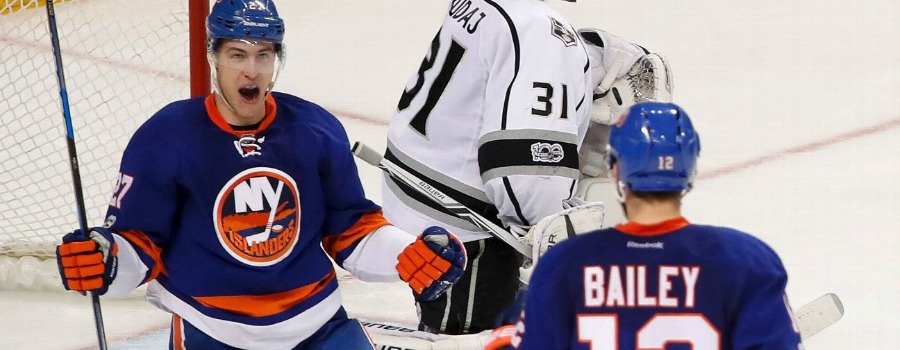Shooters are extremely valuable in hockey. (There’s a Wayne Gretzky quote here somewhere.)
For DFS purposes, what happens when elite long-term shooters see a decrease in shot volume in the short term? Or when non-elite long-term shooters experience an increase in short-term shot volume? It stands to reason that the first situation reduces player value while the second situation enhances it.
Can we find an edge by analyzing short-term and long-term trends in shooting production? Let’s use our Trends tool to find out.
Baseline Trends
Since peripheral stats like shots are valuable, it makes sense that we should roster DraftKings power play (PP) skaters in the top quintile of shots per game:

Unsurprisingly, PP skaters who meet the 80th percentile threshold for shots on goal (Shot %) over the last 12 months have an above-average Plus/Minus. What happens when we use a one-month filter (Shot % – Month)?

Basically, PP skaters who shoot a lot provide similar value over the long and short terms, as shown by these baseline trends.
What Have You Done For Me Lately?
What happens when elite long-term shooters experience a decline in volume in the short term? The following trends (broken down by position) examine the top quintile of long-term shooters with short-term volume scarcity:

Yuck.
Let’s also take a look at non-elite long-term shooters whose one-month production places them in the top quintile.

There are a couple trends to note.
- Unsurprisingly, players with a recent decrease in shots per game tend to lose value, and players with a recent increase in shots tend to gain value.
- In general, players with a short-term drop-off in production also have higher tournament ownership than those with a recent spike in shooting volume.
It’s likely that a lot of this exploitable value in production and ownership comes from salaries and perceptions that are slow to adjust.
Let’s see what happens when we take these trends a step further and break them down by salary.
Recent Spikes
Can recent spikes help us uncover valuable pricing inefficiencies?
The following trends examine non-elite long-term shooters in the top quintile of shots over the past month, broken down by salary tiers.
Center

Winger

Defensemen

Here are some items to point out about these charts:
- I have faded the samples with counts under 50. Narrow ranges can be useful, but we don’t want to get carried away.
- Both the Plus/Minus and Consistency drop off quickly at both center and winger once they reach a salary of $5,600 DK — exactly where ownership trends upwards. Intuitively this makes sense: If a player has a significant boost in production, his salary could catch up to his recent production as he starts to get more popular.
- This same drop-off at defensemen happens a bit sooner ($5,000 -$5,500).
- The sample size overall is smaller for defensemen but those with recent spikes in shots on goal provide immense value priced under $5,000 — but not much after that.
- Even though (per Jacob Myers) winger is a volatile position, the position has enjoyed a Consistency of 50.30 percent in players priced $5,000 to $5,500 with a short-term spike in shots on goal.
Conclusion
While it’s true that you (sort of) miss 100 percent of the shots you don’t take, skaters in the top quintile of shots per game provide both long- and short-term value. When such players have a short-term decrease in shots, they provide less value. Conversely, when long-term players outside of the top quintile have short-term shot production in the 80th percentile, they tend to offer value in terms of Plus/Minus, Consistency, and ownership.
This edge drops off considerably at $5,600 for centers and wingers and $5,000 for defensemen.





